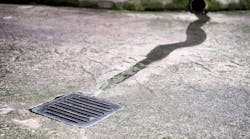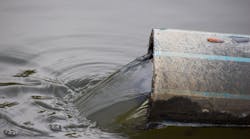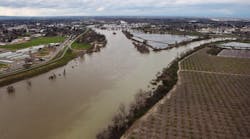The Washington State Department of Ecology (DOE) has issued a Conditional Use Level Designation for basic (TSS) and phosphorus treatment for Americast’s Filterra® Stormwater Bioretention Filtration System.
Based on submissions from Americast, the Washington DOE Technical Review Committee evaluated and determined bioretention filtration met their standards for basic treatment. The state’s DOE issued Filterra two designations for bioretention filtration use: a conditional short-term use for basic and phosphorus treatment and a pilot use for enhanced and oil treatment. The Washington DOE’s conditions of use say the treatment units meet conditions identified by the Western Washington Hydrology Model or other state DOE approved continuous runoff models.
The designation of natural, biological filtration technology in Washington demonstrates a significant change in approved methods for basic treatment compared to other methods, such as media filtration.
Bioretention filtration is an engineered process for managing stormwater runoff, using the chemical, biological and physical properties of the natural interaction of plants, microbes and soil. It improves water quality by removing pollutants and nutrients associated with urban runoff. Although it is a newer approach for stormwater filtration, the principle of biological treatment using “rain gardens” and natural filtration is well established in many parts of the country and forms the basis for agricultural and wastewater treatment practices.
Based on 15 years of research and development in bioretention testing and field monitoring, Filterra has gained approval of this technology for stormwater management projects in Washington and throughout the northwest. The system has no moving parts or special components to replace. Unlike end-of-line treatment systems, it treats smaller drainage areas closer to the source of pollutants. Easy to design and install, the system requires little long-term maintenance and can be strategically fit into existing landscape designs, making it an attractive solution for new construction, as well as site retrofits.
More information on the system can be found at http://www.americastusa.com/filterra.html.
Firm to Develop Utility Business Continuity Plan
The South Central Connecticut Regional Water Authority (RWA) has chosen Woodard & Curran to develop a business continuity plan designed to insure continued function of critical operations during normal and emergency conditions. The RWA serves over 400,000 people in New Haven and 11 nearby towns.
Using a risk-based approach to develop the business continuity plan, Woodard & Curran will collaborate with the RWA’s staff of 300 employees to identify scenarios that threaten their mission to provide a reliable supply of high quality water at a reasonable cost. Examples of such scenarios include terrorist attacks or natural disasters.
After gathering the necessary data, the consulting firm will meet with the RWA’s business continuity committee regularly to conduct a business impact analysis, develop documentation standards, establish recovery time objectives, identify resource conflicts and recovery sites, and complete monthly reports as well as a cost-benefit analysis in an effort to assemble a long-term business continuity plan that protects RWA’s ability to achieve its mission during emergency and recovery processes.
As follow-up, Woodard & Curran will conduct employee orientation training.
First Annual Streamflow Summary Available
This past year has produced some record-breaking high streamflow conditions in the Northeast, as well as some near-record lows in other areas of the country, according to the U.S. Geological Survey (USGS). In a new USGS publication, “Streamflow of 2006 - Water Year Summary,” changes in streamflow over the course of 2006 are examined relative to conditions over the past 75 years.
Some areas of the country experienced higher streamflow than usual. For example, parts of New England recorded their highest annual flows since 1930. At the same time, below normal conditions were prevalent in Texas and other states in the central and southern Great Plains, parts of the Southeast, and Alaska.
This first-ever USGS summary of seasonal, regional, and national streamflow conditions for water year 2006 can be accessed at http://water.usgs.gov/waterwatch/2006summary/.


